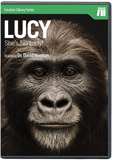
Evaluating the Gait Analysis of Ardi
Abstract
Computer animations on the Discovery Channel were quite misleading about how Ardi (Ardipethicus ramidus) walked. Dr. Mark Blais, a podiatrist, explains.
Keywords: human evolution, Ardipithecus ramidus, evolution, biology, podiatry, feet, gait, Owen Lovejoy, fossils
The missing link is still biomechanically missing. On October 11 the Discovery Channel aired a documentary on the findings of a 15-year study of the skeletal remains of Ardipithecus ramidus or Ardi. Ardipithecus is believed to be a woodland creature with a small brain, long arms, and short legs. The study concludes that Ardipithecus’s pelvis and feet show a primitive form of two-legged walking on the ground, which allowed Ardipithecus the capability of using its feet for tree climbing and grasping like an ape. It is hoped that these discoveries will answer old questions about how hominids became bipedal.1
In podiatry school and during my residency, I was trained in the detailed study of lower extremity human anatomy and proper analysis of the biomechanics of gait, whether it be walking or running. As a podiatrist I have studied the gait of thousands of humans.
The understanding of the bipedal biomechanics of humans is not a simple process.1 There are 26 bones, approximately 30 joints, over 100 ligaments, and 15 different muscles in three layers in each foot, along with tendons from the lower leg that attach to important biomechanical areas of the foot. All these structures must be assessed, both in a weight-bearing and non–weight-bearing positions, in order to adequately assess the biomechanical capabilities of a subject.
Ardi researchers have retrieved only some of the foot bones. While some bones were whole, others were partial bones with many being only fragments of possible foot bones. No soft tissue (musculature, ligaments, or tendons) are available for analysis.
The few intact foot bones are not adequate to make any determination as to the type of gait Ardi displayed. The researchers have based their conclusions on incomplete data and given a biomechanical analysis that is more bias than fact and should not be considered credible.
The research group even hired a biomechanical lab (LifeModeler, Inc.) to run computer animations of Ardi’s gait. On the LifeModeler website, it states that the world’s leading anthropologists use LifeMOD to reconstruct millions of years of evolution and understand the origins of humankind.
The LifeModeler team was engaged to provide information on the age-old question of how early hominids became bipedal for the Discovering ARDI television special featured on the Discovery Channel. The study, not unlike a forensic investigation from an episode of CSI, entailed examining a set of bones from the discovery and recreating a LifeMOD biomechanical model using clues discovered from the bones. LifeModeler engineers, working in conjunction with Professor Owen Lovejoy, built Ardi’s musculoskeletal structure using LifeMOD software. Using the software to control various muscular activities, the model was used to provide insight into a foot structure which could both climb a tree and walk effectively.2
The researchers admit in the Discovery video that part of the phase of gait called propulsion, which involves toe off, is a difficult issue to overcome as a result of the opposable big toe. The lab researchers state that they would have to adjust their software to produce an animation of Ardi.3 One can only imagine why.
The presence of a live ambulating specimen is the only accurate process of evaluating gait. Imagine bringing a skeleton to a foot specialist and asking him or her to evaluate the gait. It would be impossible to accurately assess the gait without knowing the weight bearing load, muscle size, and angulations of attachment, along with normal and/or abnormal neuromuscular activity. What Owen Lovejoy asked the programmers to do was to program a gait based on a skeleton, absent musculature and ligament attachments. The results of the gait analysis presented in the video are therefore biased on the artificial input data supplied to replace the missing parts of the specimen.
As a podiatrist I have listed six gait problems from the findings on Ardi as seen from the pictures of the bones found.
- The first metatarsal-medial cuneiform joint appears to be a saddle-shaped joint similar to those found in hands rather than feet. This would indicate that the first ray (great toe and bones behind it) would be very flexible and good for grasping and tree climbing, but unstable and poor for bipedal walking.
- The first ray (great toe, first metatarsal-medial cuneiform joint) is said to be flexible, and its shortness would result in the first ray having little or no propulsive function during gait. The weight of the body would be transferred to the lesser metatarsals (center and outer ball of the foot), especially the second metatarsal. This added pressure would result in a thick second metatarsal and perhaps lesser metatarsals according to Wolff’s Law. The second metatarsal or lesser metatarsals in Ardi do not appear thickened, indicating they do not appear to be taking on added stress, perhaps because full weight bearing is limited or absent.
- The ankle, subtalar, and midtarsal joints are not intact and assessment of their function can only be speculative. An intact calcaneus is absent and is needed to evaluate heel strike.
- The hip bone appears so deteriorated that determining boney orientation and possible sites of muscle attachment again would be speculative rather than factual.
- The knee joints are not intact, so the determination of knee range of motion for upright walking cannot be known.
- The documentary claims that Ardi probably had six lumbar vertebrae, which would allow for a lumbar curvature and upright posture for bipedal gait. Researcher Owen Lovejoy calls this curvature lordosis. Unfortunately if Ardi had lordosis, also called “swayback,” her back would be considered deformed, since lordosis is an accentuated abnormal curvature of the lumbar spine. Perhaps the lab animation should have shown a pregnant or centrally obese Ardi carrying food up a hill.
The above six points make the gait analysis by the lab and Discovery Channel presentation no more than a software creation.
In conclusion, one may be impressed by the scientific procedures that this group undertook to find and preserve the artifacts. The hard work and determination to preserve the artifacts should not be questioned. One might also be excited by the finding of a new species. One must, however, be concerned about a presentation made to the world based on incomplete data and the manipulation of that via biased input of data into a software program in order to present an animation of a gait. The results are merely a product of hopeful human speculative input rather than scientific fact. Perhaps one should rather see Ardipithecus ramidus as another unique example of God’s creation rather than trying to artificially fill in the missing links of the evolutionary tree.
Footnotes
- Christopher Nester, Andrew Findlow, Anmin Liu, Erin Ward, and Jay Cocheba, “Redefining Biomechanics of the Foot And Ankle,” Podiatry Today 18 no. 10 (2005): 52–62.
- LifeModeler, Inc., “MD Gait.”
- Discovery Channel, “Ardipithecus and Human Evolution.”
Recommended Resources

Answers in Genesis is an apologetics ministry, dedicated to helping Christians defend their faith and proclaim the good news of Jesus Christ.
- Customer Service 800.778.3390
- © 2024 Answers in Genesis




